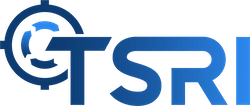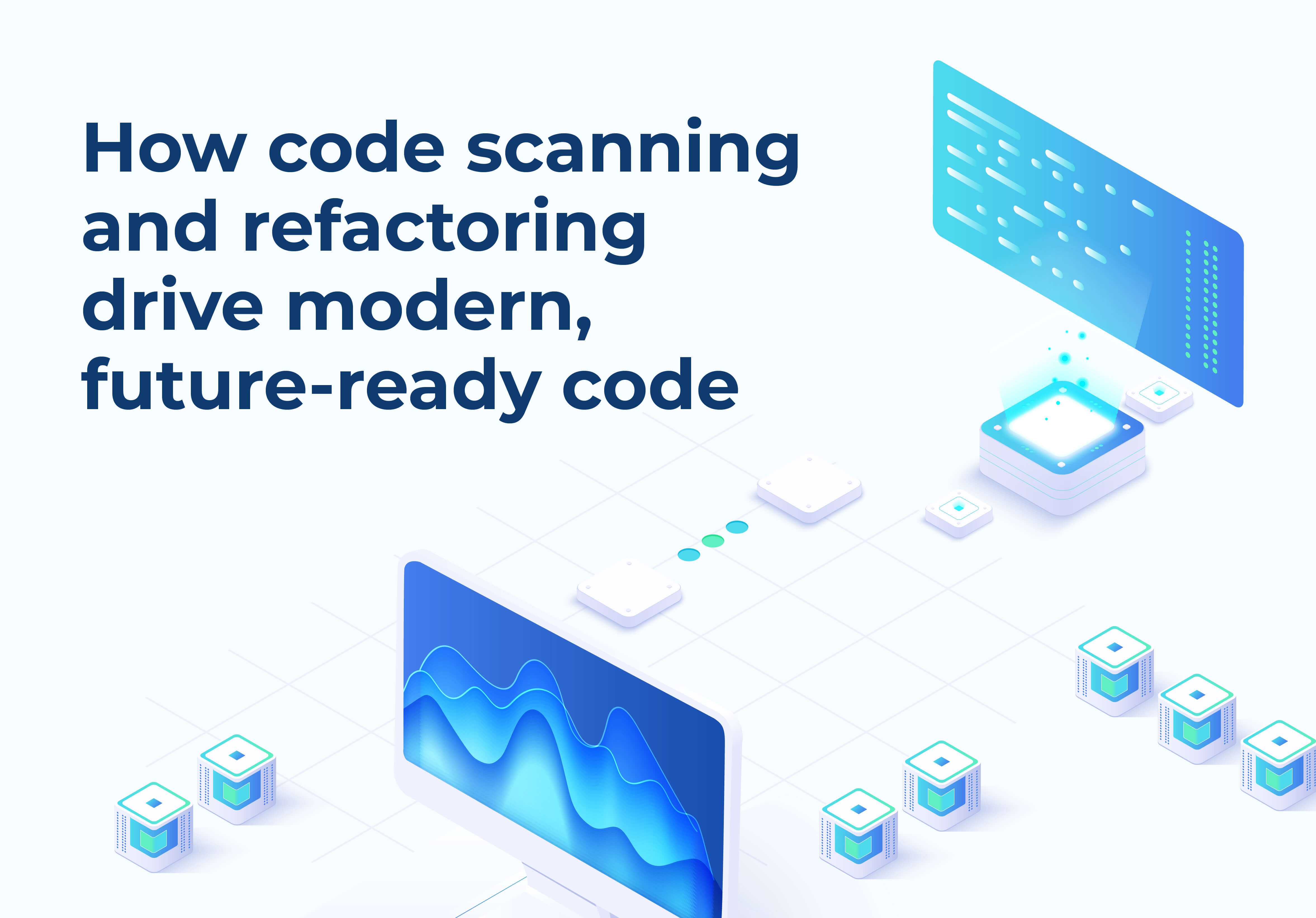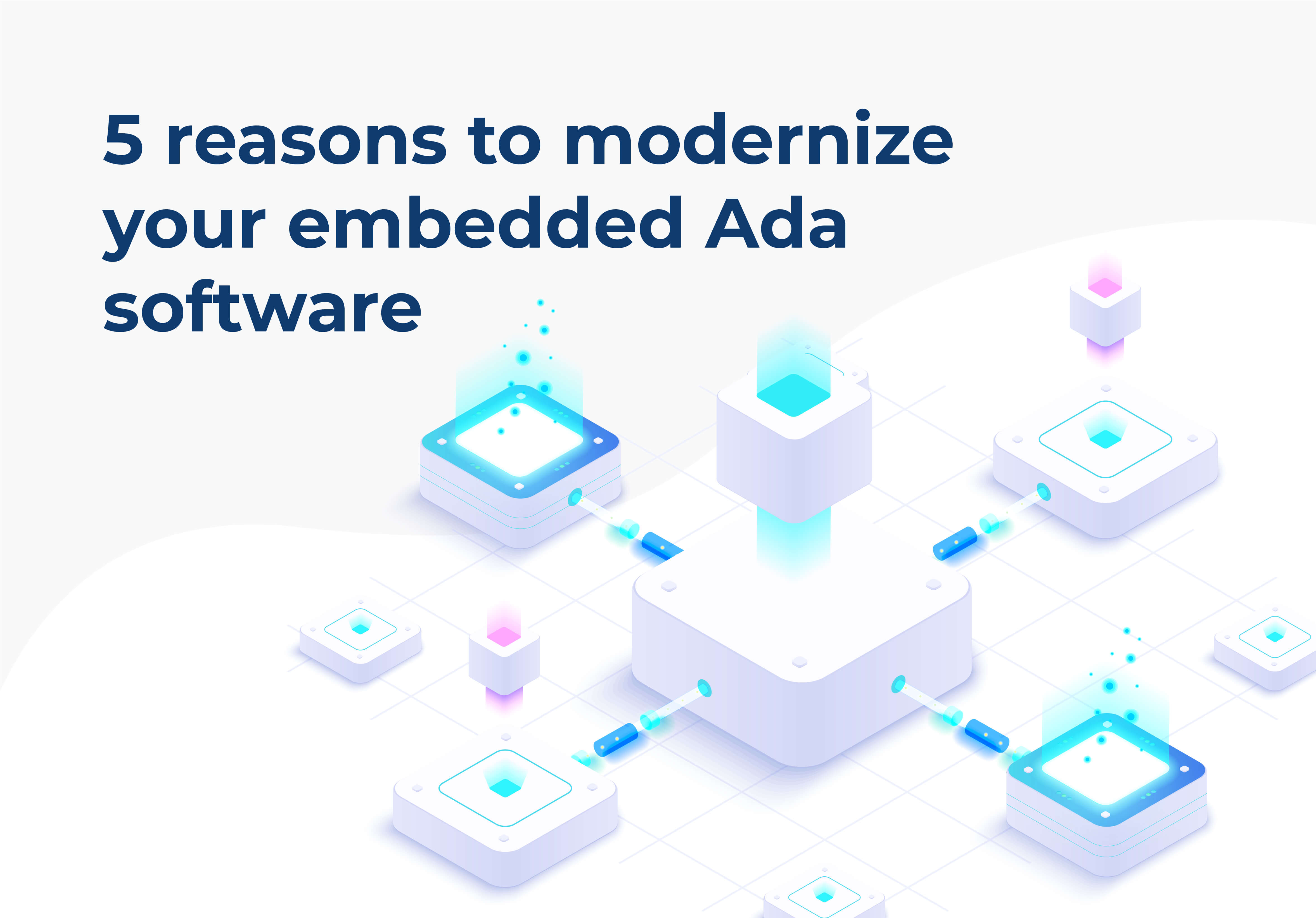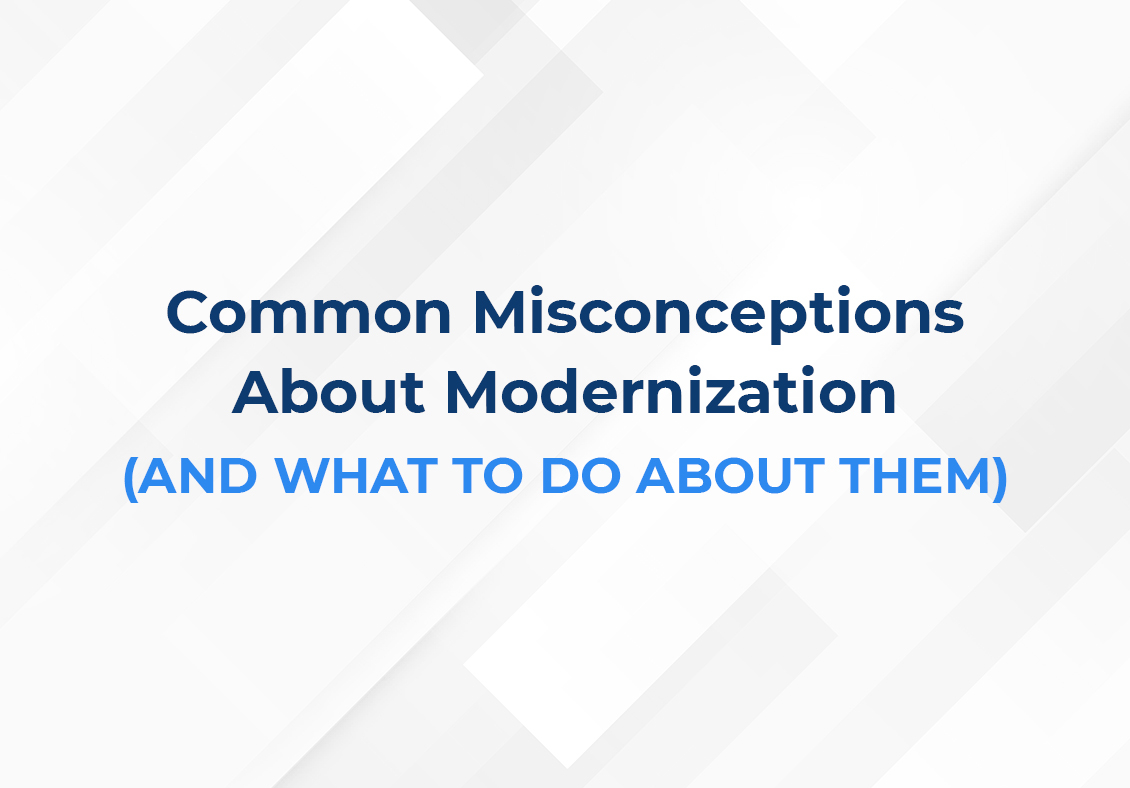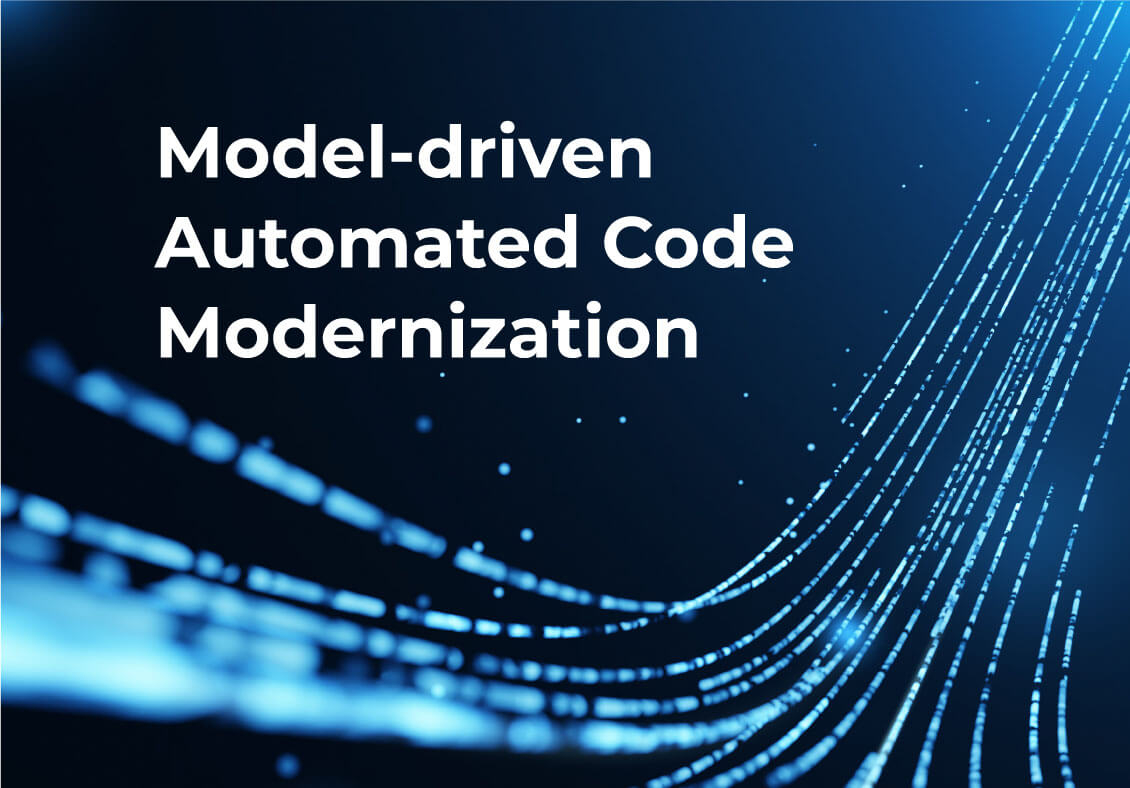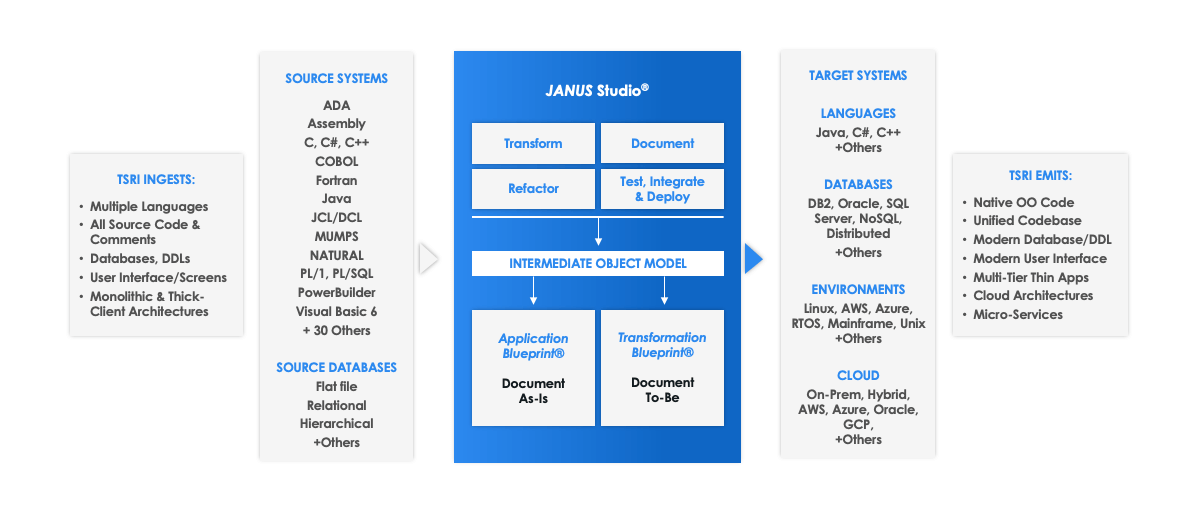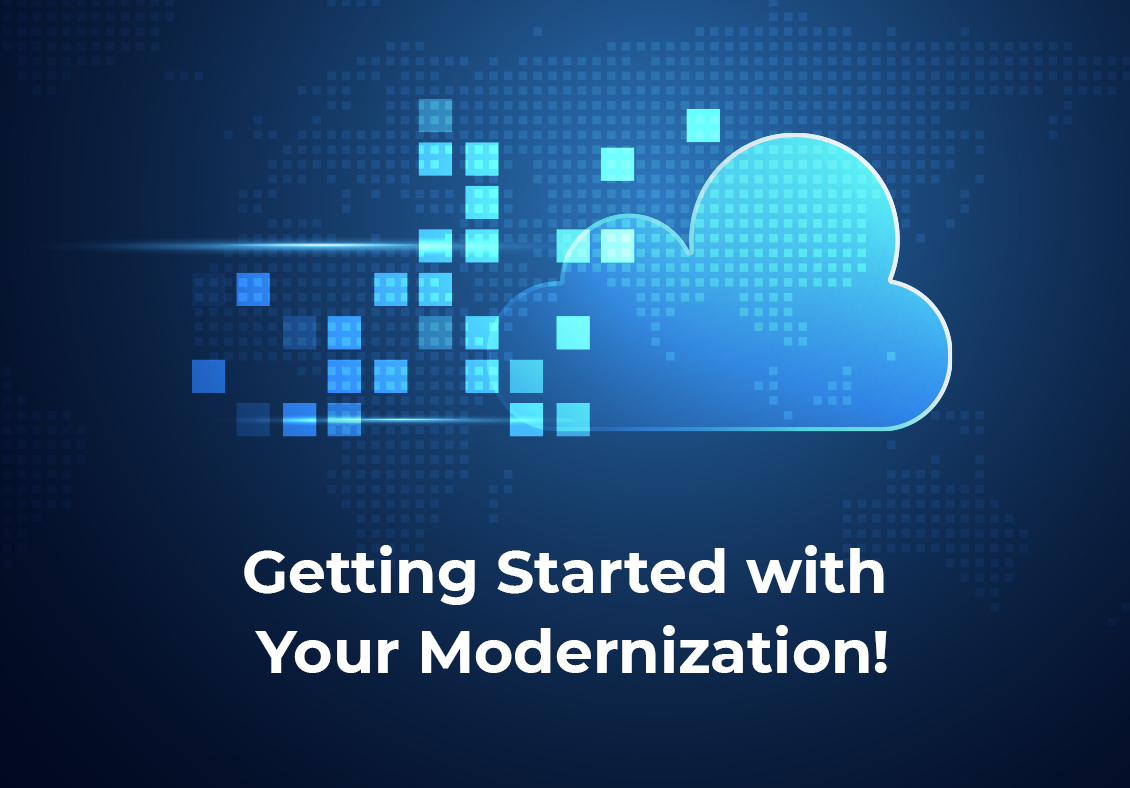
How long would it take you to complete 25,000 tasks that take thirty minutes each?
Before you drag out your calculator, that’s 12,500 hours, or about 1,562 working days. Wouldn’t it be better to have it all done in under an hour? That gives you an idea of how refactoring—when done correctly—can accelerate modernization process and deliver accuracy in the range of just one error among 20,000 lines of code. That’s the kind of accuracy that’s needed for critical systems. Let’s talk about how refactoring achieves it so fast.
The refactoring phase of modernization at TSRI takes a project beyond updating the code and database to modern standards and system architecture. Sure, the planning, assessment, transformation, and integration phases of a modernization process get the mass of the work done. But more is needed. Imagine if a great painter only took a portrait to the point of getting the features in the right places. For functional equivalency, high performance, and future-readiness you need to dive into the details to get them as right as the original—and ready for future enhancements and needs.
That’s where refactoring can be hugely beneficial. If, after the transformation and integration phases you have to find and address each issue manually over hundreds of thousands or millions of lines of code, you may as well add those 12,500 or more hours back in. That’s why refactoring is key. By including an iterative code scanning and refactoring phase to the modernization process, TSRI automatically and semi-automatically remedies a host of issues at scale that would make developers run for the hills, including:
- Pinpointing and getting rid of dead or non-functional code
- Merging and consolidating duplicate code and data
- Improving design of code and data
- Eliminating system flaws from transformed software
"TSRI's refactoring process creates reusable components that can be applied to future projects"
And beyond those cleaning and refining functions, a well-designed refactoring process also provides forward-looking advantages. TSRI’s refactoring process improves maintainability, remediates security vulnerabilities, increases performance, and modularizes functionality. It also creates reusable components that can be applied to future projects for optimization, packaging, and redistribution.
When you’re able to reuse some or all of the outputs of automated or semi-automated refactoring, you don’t have to recreate the mechanisms for modern microservices, REST calls, and other reusable elements. They’re at your fingertips and ready for integration in modern environments or databases for future projects. It gives you the best of modularity, but customized and created specifically for your systems’ needs such as data-dictionaries, code and record consolidation, introduction of logging or comments, and more.
"It gives you the best of modularity, but customized and created specifically for your systems' needs."
One scan, one rule, and thousands of fixes
A key part of the refactoring process is scanning the newly modernized code to find issues for remediation. To do this, we use the SonarQube scanning tool. SonarQube is an open-source platform that executes continuous inspection of code quality in modernized code. It provides a detailed report of bugs, code smells, vulnerabilities, code duplications, and more. Once SonarQube has identified problems in the code the TSRI team can use the results to resolve the issues and improve code maintainability issues and security vulnerabilities.
This is where the economy of rules comes in. Once SonarQube has pointed out issues across thousands of lines of code, TSRI uses that intel to identify the types of issues that need to be addressed. When an issue appears once in an application, it often appears hundreds or thousands of times, and a single rule applied across all code can eliminate a host of individual instances.
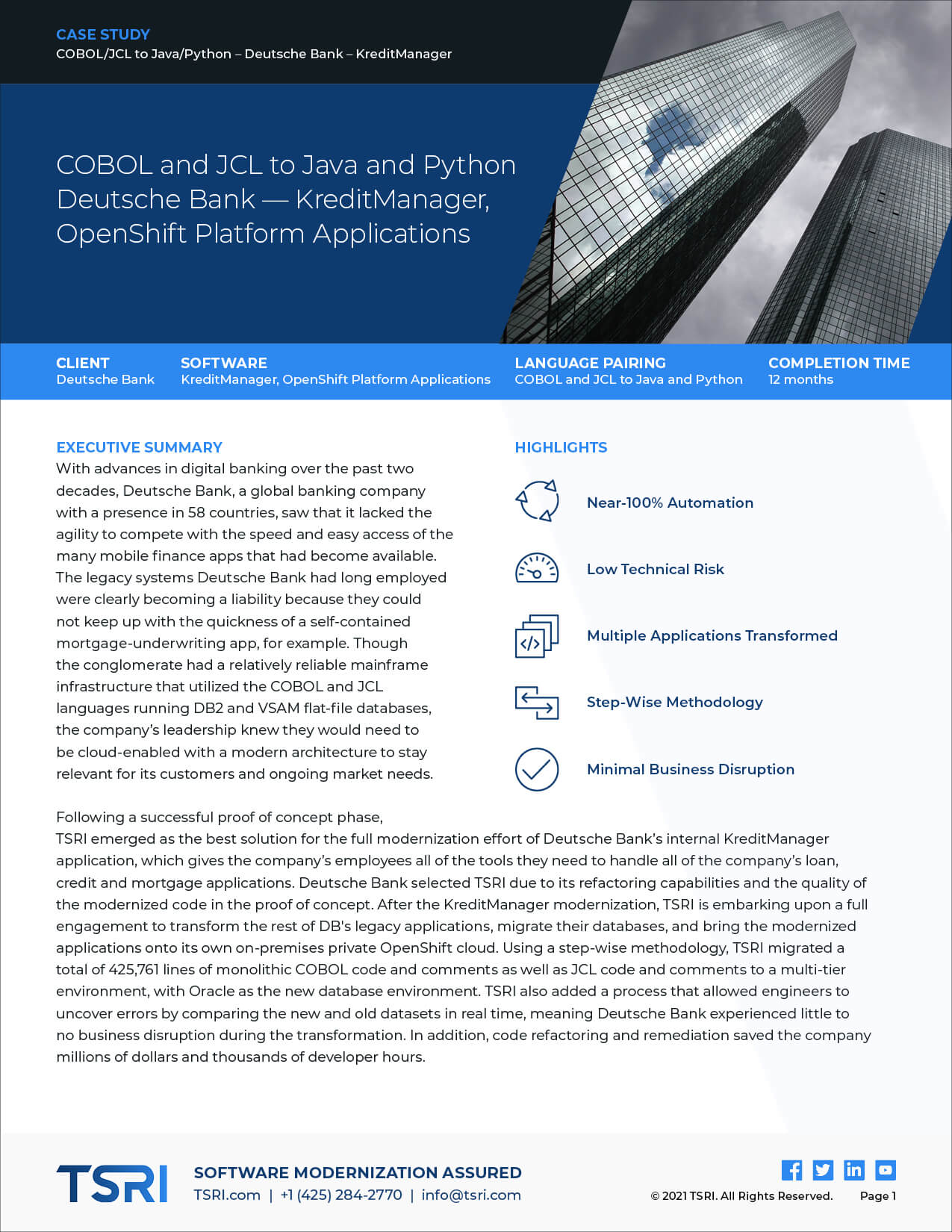 So how did we get to those 12,500 hours we started with? We didn’t just make it up. In a TSRI project for Deutsche Bank, a single rule created based on a scan of the code fixed about 25,000 instances that issue. SonarQube estimated it would take 30 minutes to fix each instance. That means refactoring automated the remediation process and saved them about 12,500 hours of software development time. That’s a lot of Marks.
So how did we get to those 12,500 hours we started with? We didn’t just make it up. In a TSRI project for Deutsche Bank, a single rule created based on a scan of the code fixed about 25,000 instances that issue. SonarQube estimated it would take 30 minutes to fix each instance. That means refactoring automated the remediation process and saved them about 12,500 hours of software development time. That’s a lot of Marks.
The proof is in the work. Refactoring can not only save thousands of coder hours, but a combination of code scanning and refactoring can also uplevel your modernization with:
- Maintainability making it easier to update and manage code going forward
- Readability for modern developers to find and improve the functions they need more easily
- Security by increasing the speed with which security issues can be found and remediated either manually or through refactoring rules
- Performance greatly increasing the efficiency of the application—for instance, enabling multiple services to run in parallel rather than sequentially.
Find out what refactoring done right can do for you, contact TSRI now
----
Proven by decades of results. Prove it for yourself.
For decades, TSRI clients have been discovering a dramatically faster, more accurate, and less expensive AI-based and automated modernization process. We’ve earned a place as the go-to resource for enterprise corporations, government, military, healthcare, and more. Now prove it for yourself. Find out how the proprietary TSRI modernization process delivers future-ready, cloud-based code in any modern language in a fraction of the time.
See Case Studies
Learn About Our Technology
Get Started on Your Modernization Journey Today!
